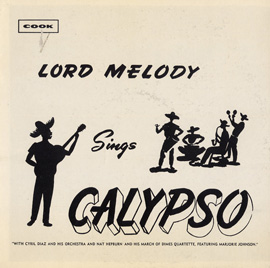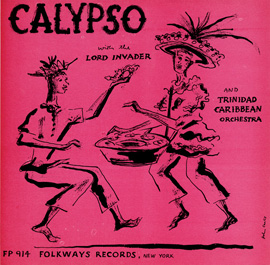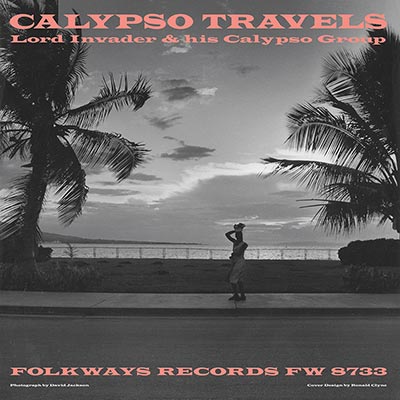Summary
In this lesson students will travel to the island of Trinidad to explore the feel of Calypso music and participate in a Trinidadian popular dance, the Limbo. Students will be able to perform a Calypso rhythmic pattern on classroom instruments and will accompany their own Limbo dance on Orff instruments while exploring the social and cultural context of Calypso music.

From Liner Notes of West Indian Folksongs for Children, Lord Invader, 1960
Suggested Grade Levels: 3-5, 6-8
Country: Trinidad
Region: Caribbean
Culture Group: Trinidadian
Genre: Calypso
Instruments: Voice, Body Percussion, Drums, Rhythm Sticks, Orff Xylophones, Cowbell, Double Bell
Language: English
Co-Curricular Areas: Dance, Social Studies, History
National Standards: 1, 2, 3, 6, 8, 9
Prerequisites: Students will have prior knowledge of syncopation, I-IV-V chord progressions, and will have experience performing as a percussion ensemble
Objectives:
- Listen to Calypso music from Trinidad and identify musical elements, including instrumentation, rhythmic patterns, call and response forms, and improvisation
- Perform a Calypso style rhythmic pattern with body percussion and non-pitched instruments and accompany a popular dance in Calypso style on Orff instruments
- Sing a song and perform a dance in Calypso style
- Understand that Limbo is a popular dance in Trinidad, often performed to Calypso music
- Discuss geographical, historical and social aspects of Calypso, Limbo, and Trinidadian musical styles
Material:
- “Tom Cat Mambo” by the Invaders;
- “Carnival Proclamation” by Lord Melody;
- “Limbo Dance” by Lord Invader;
- Limbo Dance text, from the Liner Notes of West Indian Folksongs for Children by Lord Invader
- Classroom Instruments (drums, sticks, double bell, cowbell, Orff xylophones)
Lesson Segments:
- Catch the Calypso Beat (National Standards 6, 8, 9)
- Put the Beat in Your Feet (National Standards 2, 6, 9)
- Dance the Limbo (National Standards 1, 3, 6, 8, 9)
- Play Your Own Calypso (National Standards 1, 2, 3, 6, 8, 9)
1. Catch the Calypso Beat
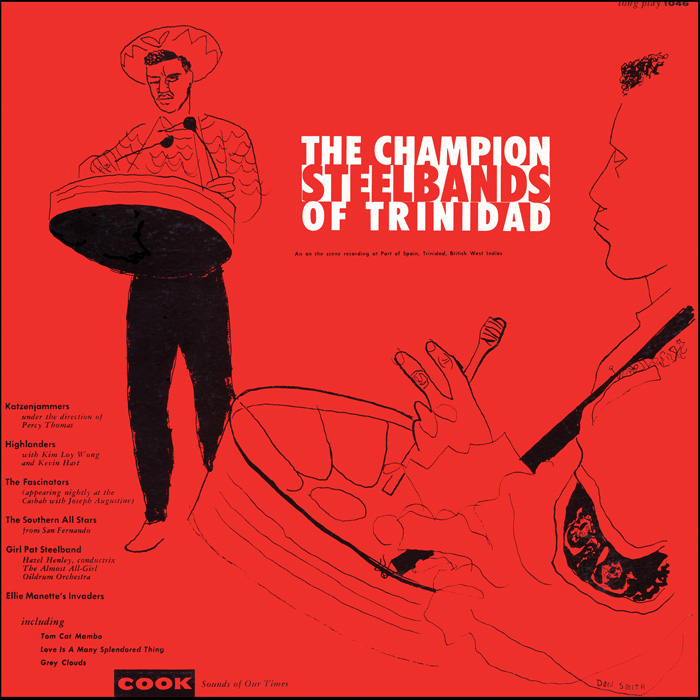
“Top Cat Mambo”
from The Champion Steel Bands of Trinidad (1957) | COOK01046
- a. Students listen attentively to a recording of “Top Cat Mambo” by the Invaders while considering the following guiding questions.
- i. What instruments do you hear?
- ii. Where do you think this music is from/how do you know?
- iii. What purpose does the music serve?
- iv. What might people be doing when they hear this music?
- v. Who listens to this music?
- b. Students discover that the music they are listening to is Calypso style music from the island of Trinidad.
- c. Teacher shows a map of Trinidad along with photos of instruments that are used or might be heard in Calypso music including:
- i. Steel pan
- ii. Drums
- iii. Shakers
- iv. Guitar
- v. Drum kit
- vi. Bass
- vii. Horns
- d. Discuss the use of different instruments in different settings (i.e. street parade vs. dance club).
- e. Students learn that “chipping” is a way of walking to the beat of Calypso music as people parade through the streets during Carnival in Trinidad.
- i. The term “chipping” refers to the sound of leather shoes as they chip at the pavement
- ii. Students listen again and perform “chipping” to mark the beat along with the recording, moving freely about the classroom
- f. Teacher models clapping the characteristic Calypso offbeat “strumming” pattern while students imitate.
- i. Students practice clapping the strum pattern with the recording
- g. Students take turns in groups, one group chipping and while the other strums to get the feel of the Calypso rhythmic patterns.
- h. Students independently perform the Calypso rhythmic patterns with body percussion (chipping and strumming) along with the recording.

Assessment:
Are students able to keep a steady beat while “chipping” to mark the strong beats? Are students able to perform the offbeat “strum” pattern along with the recording? Are students engaged in the discussion of the characteristics of Calypso style music?
2. Put the Beat in Your Feet
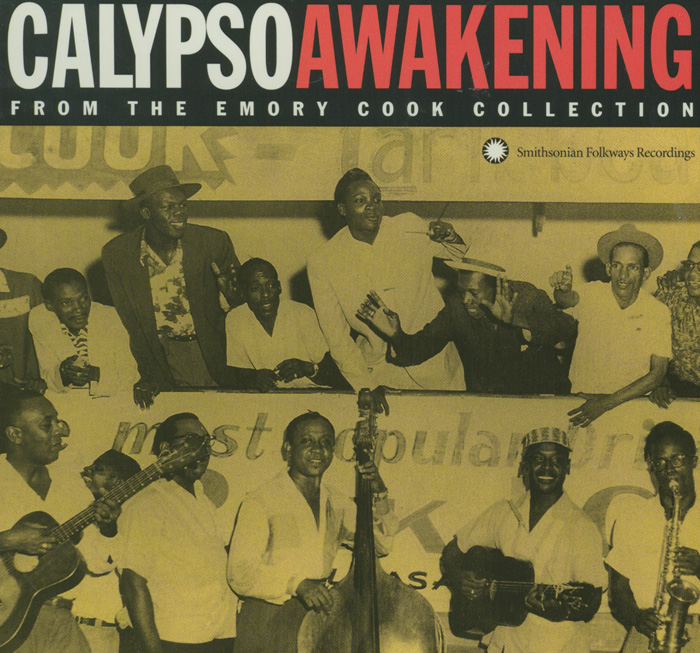
“Carnival Proclamation”
from Calypso Awakening from the Emory Cook Collection (2000) | SFW40453
- a. Students listen to a recording of “Carnival Proclamation” by Lord Melody.
- b. Compare and contrast to the recording of “Top Cat Mambo” by the Invaders.
- i. What instruments do you hear in this recording?
- ii. How is this recording different from the prior recoding?
- iii. Where might this song be heard?
- iv. What might people be doing while they hear this music?
- c. Students practice “chipping” to mark a steady beat while clapping the offbeat “strumming” rhythm in a new tempo.
- d. Students transfer chip and strum pattern to classroom instruments: drums and rhythm sticks.
- i. Students play along with the recording
- ii. Switch parts and play again while listening
Assessment:
Are students moving to the beat? Are students able to clap a syncopated rhythm pattern? Are students able to successfully transfer the rhythm to classroom instruments and perform with the recording? Are students able to transfer the feeling of the Calypso style rhythmic pattern from a fast tempo to a slower tempo?
3. Dance the Limbo
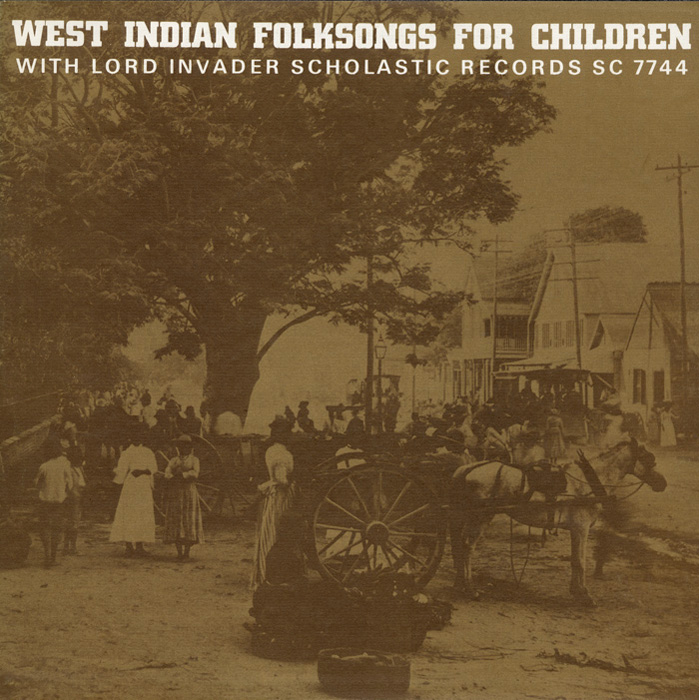
“Limbo Dance”
from West Indian Folksongs for Children (1960) | FW07744
- a. Students listen to a recording of “Limbo Dance” by Lord Invader.
- b. Students read and sing along with the text while listening to discover the call and response form and improvisatory nature of calypso singing.
- i. Discuss the Limbo dance and how it is performed.
- ii. What is the text about?
- iii. Who might be singing the song?
- iv. How many voices are there?
- v. Where might this song be performed and for what purpose?
- vi. What is the Limbo? Have you danced it before? Where? With who? For what purpose?
- vii. What is the form of the song?
- viii. What is the caller saying? Why would he be challenging others?
- c. Teacher provides information on Calypso singing and the showmanship of Calypso singers.
- d. Students perform a Limbo dance as a whole group, with individuals trying to “outdo” others as prompted by the lyrics of the song.
- i. Students improvise dance movements that match the improvisatory style of Calypso singing
Assessment:
Are students able to identify the form of the song? Are students engaged in the discussion of Calypso improvisatory singing? Do students improvise dance movements that respond to the singer’s improvisation? Can students play the Calypso beat in a new tempo?
4. Play your own Calypso
- a. Students review and perform “chipping” and “strumming” rhythm patterns while listening again to “Limbo Dance” by Lord Invader.Â
- i. Students transfer rhythm to drums and sticks
- b. Teacher models a new pattern on the double bell and individual students imitate, taking turns with the double bell.
- i. Add a steady beat on cowbell while students perform Calypso pattern on percussion instruments along with the recording
- c. Students transfer “chipping” pattern (steady beat) to bass xylophones, playing a I-IV-I-V-I chord progression in the key of C, supported by notation if needed.
- i. Percussion continues as students switch parts from percussion to xylophone
- d. Students transfer syncopated “strumming” pattern to alto xylophones, playing thirds above the root of each chord in the bass.
- e. Students sing while they play the chord progression and rhythm instruments.
- i. Transfer melody to soprano xylophones and assign a caller and to play the call while students sing the response
- f. Once secure, the caller may choose to improvise the call by removing the F and B bars to improvise in C pentatonic.

Text: Nobody can limbo like me! Limbo, limbo like me...
Assessment:
Do students transfer what they have learned about Calypso rhythmic patterns (chip/strum) to a new setting on Orff instruments? Does the ensemble play together securely? Is the call and response played accurately? Are students able to improvise? Are all students engaged throughout the performance process?







